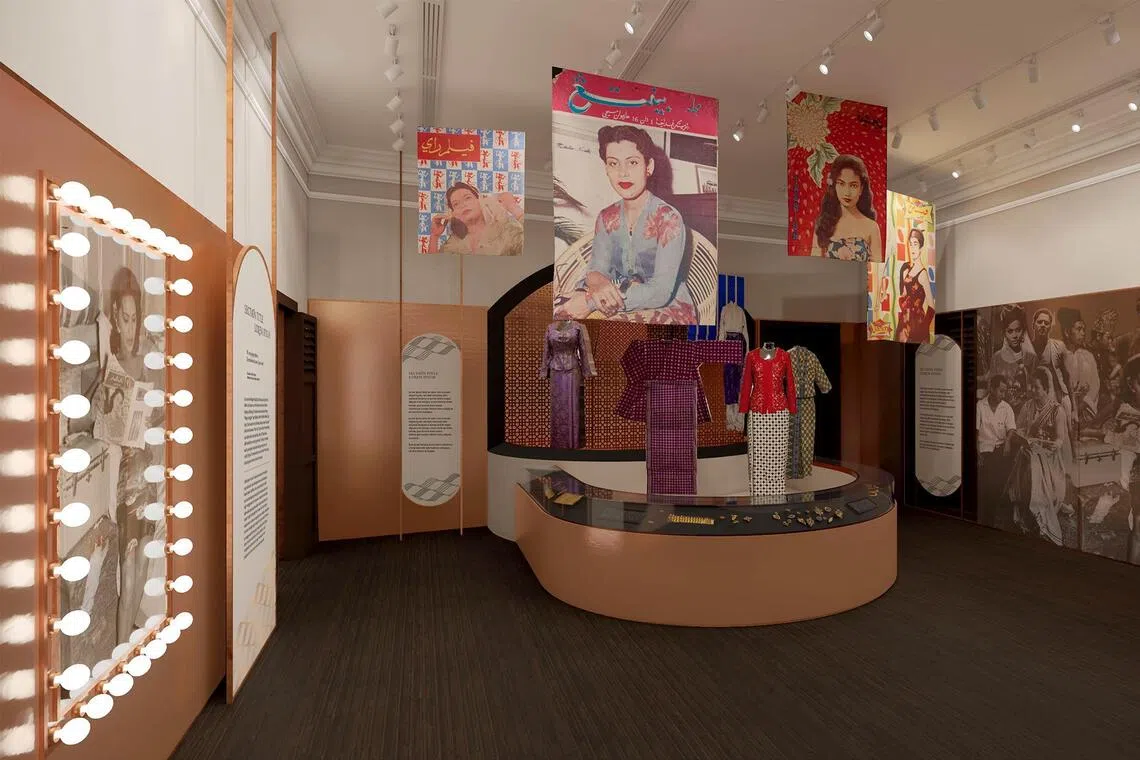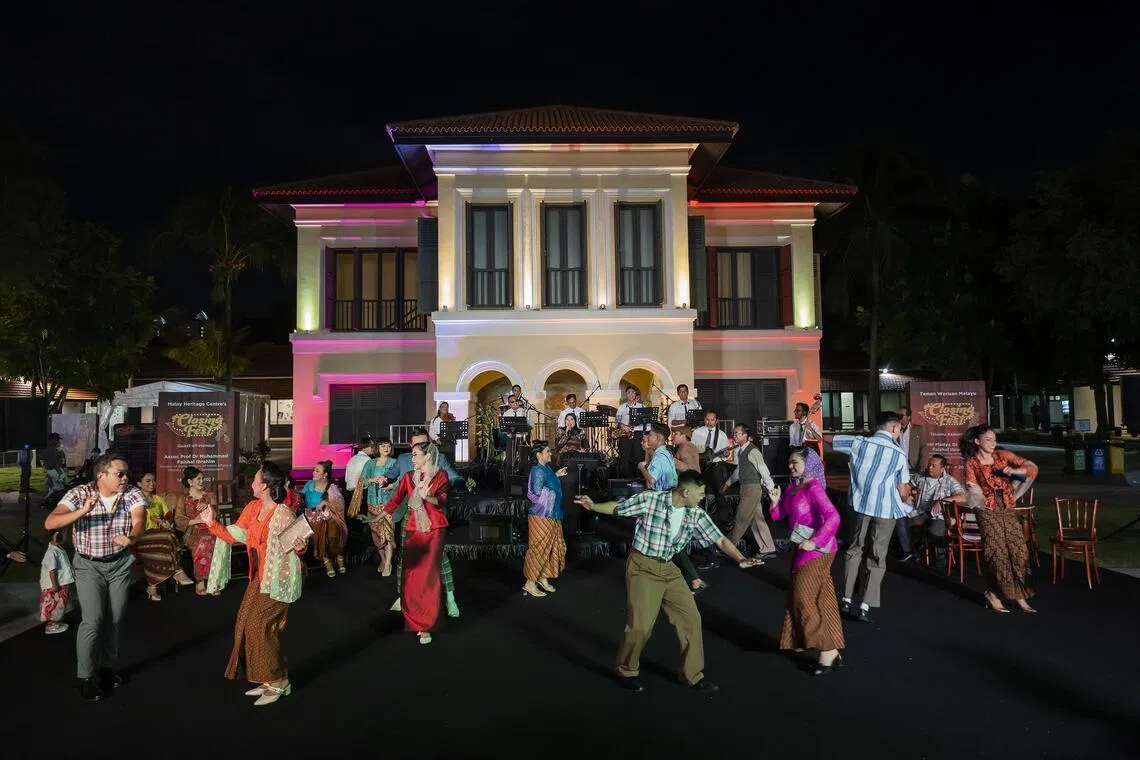Revamped Malay Heritage Centre to have outdoor galleries, interactive activities to document culture
Sign up now: Get ST's newsletters delivered to your inbox

An artist’s impression of a gallery in the revamped Malay Heritage Centre, featuring artistes from Singapore’s golden age of Malay entertainment.
PHOTO: MALAY HERITAGE CENTRE
Follow topic:
SINGAPORE – At the redeveloped Malay Heritage Centre (MHC), visitors will be able to walk down memory lane to revisit the golden age of Malay popular culture and also discover how traditions and customs were adapted to what is practised today.
Visitors can enjoy a look back at the history of the Malays in Singapore, while also keeping an eye on the future of the community, through refreshed exhibits and interactive activities when the centre reopens in April 2026 after more than three years of renovation.
Among the new features are outdoor galleries detailing the history of Istana Kampong Gelam – the gazetted national monument where MHC is located – on the grounds’ lawn.
The reopening of the MHC will also provide a fresh opportunity to build up the surrounding Kampong Gelam area as an “iconic and vibrant” precinct for Malay culture, said Acting Minister-in-charge of Muslim Affairs Faishal Ibrahim on Sept 17.
These are all part of efforts to ensure Malay culture and heritage are documented for future generations and further affirm the Malay/Muslim community’s integral role in shaping Singapore’s national life, he said.
Associate Professor Faishal was speaking to the media on the sidelines of a closed-door dialogue that discussed ideas to nurture Malay culture and heritage and grow the sector. About 50 people from the local Malay arts and culture scene were in attendance.
“Malay culture and heritage are not just about one community, but fundamental to our nation’s history and identity. It is relevant to all Singaporeans,” he said.

A music-and-dance performance held in the Malay Heritage Centre compound, celebrating the joget genre.
PHOTO: MALAY HERITAGE CENTRE
The session was held at Permata, a restaurant located at Gedung Kuning (Yellow Mansion), which was originally an annex to Istana Kampong Gelam.
At the dialogue, the ideas discussed included having year-round cultural programmes in the Kampong Gelam area, as well as developing thought leadership in the sector.
The session – which Prof Faishal said was the first of a series on Malay culture and heritage here – reflected a “shared commitment to preserve and nurture Malay culture and heritage as an important part of our Singapore identity”.
Prof Faishal added that he envisioned an “authority” – made up of Malay cultural practitioners with passion and expertise in the sector – that could help shape the cultural landscape here, working together with other bodies such as the National Heritage Board.
Before the dialogue, MHC general manager Hafiz Shariff gave an update on what visitors could expect at the new centre.
It will have a more open and accessible entrance from Kandahar Street, as part of efforts to make the centre more user-friendly, he said.
There will also be new activity spaces for workshops and talks, as well as an upgraded audio-visual system in the auditorium, Mr Hafiz said.
On Aug 17, Prime Minister Lawrence Wong announced in the Malay segment of his National Day Rally speech that the MHC will reopen on April 25, 2026
PM Wong said then that the centre will feature new galleries and programmes showcasing the richness and vibrancy of Singapore’s Malay culture.
On Sept 17, Mr Hafiz said the centre will feature greater representation of Malay ethnic sub-groups – via objects representing their cultures as well as their unique writing systems – as well as a greater focus on women, to honour their contributions to areas such as education, literature and the arts.
“We will also introduce commissioned works for the first time in MHC, throughout the galleries, created by local emerging and established artists,” he added.
Across the two levels of the centre’s main building, six spaces will trace the evolution of the Malay identity here from the 19th century until today.
This will include the relationship with the Johor-Riau sultanate, how Malay rulers and communities adapted to colonial rule amid the transfer of Singapore to the British in the 19th century and how Singapore’s status as a port city made it the regional hub for haj pilgrims.
Also highlighted will be the island’s role as a hub for Malay popular culture during the golden age of the 1950s and 1960s, along with the role played by women in film, music and journalism during this period, he added.
The last gallery will showcase how traditions and customs were passed down and adapted across generations, Mr Hafiz said.
Dr Norshahril Saat, chairman of the Malay Heritage Foundation which oversees the MHC, suggested the centre could also deepen its focus on its research and discursive aspects, as well as strengthen its engagements with key stakeholders.


